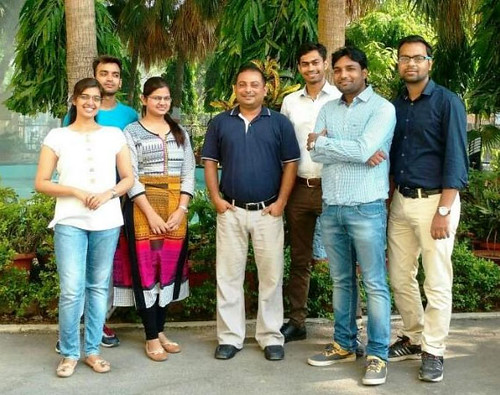Source
दैनिक जागरण, 18 अगस्त, 2017
 भारतीय वैज्ञानिकों के एक समूह ने यह पता लगाया है कि आर्सेनिक के संपर्क में आने से प्रतिरक्षा क्षमता किस तरह कम हो जाती है।
भारतीय वैज्ञानिकों के एक समूह ने यह पता लगाया है कि आर्सेनिक के संपर्क में आने से प्रतिरक्षा क्षमता किस तरह कम हो जाती है।थाइमस ग्रंथि के विकास रोकने में आर्सेनिक की भूमिका जगजाहिर है। थाइमस ग्रंथि ही टी लिम्फोसाइट्स या टी कोशिकाओं के जरिए प्रतिरक्षा को विकसित करने में सहायता करती है। लखनऊ स्थित ‘इंडियन इंस्टीट्यूट अॉफ टॉक्सिकोलॉजी रिसर्च (आइआइटीआर)’ के वैज्ञानिकों द्वारा किये गये एक नये अध्ययन ने इसके पीछे के तंत्र को समझाया है। इसे यह पता चल सकेगा कि आर्सेनिक के संपर्क में आने वाले लोग तपेदिक (टीबी) जैसे संक्रमण के लिये अतिसंवेदनशील क्यों हो जाते हैं।
शोधकर्ताओं ने आर्सेनिक के संपर्क के प्रभाव की जाँच की और बताया कि किस तरह टी कोशिकाओं को विशेष कोशिकाओं (सीडी 4+ और सीडी 8+) और नियामक टी-कोशिकाओं की भूमिका में बदल दिया गया। सीडी 4+ कोशिका सहायक टी कोशिकाओं पर पाई जाती है। ये वायरल संक्रमण से लड़ने के लिये शरीर को निर्देशित करती हैं, जबकि सीडी 8 लड़ाकू टी कोशिकाओं पर पाई जाती हैं जो संक्रमित कोशिकाओं को मारकर शरीर की रक्षा करती हैं।
अध्ययन के तहत प्रयोगशाला में चूहों को आर्सेनिक के संपर्क में लाया गया । इसके बाद पाया गया कि सीडी 8 कोशिकाओं को प्रभावित किये बिना थाइमस में टी लिम्फोसाइट्स सीडी 4+ में परिवर्तित हो गया। इसके बाद कोशिकाओं को प्लीहा (स्प्लीन) में ले जाया गया जहाँ ये नियामक टी कोशिकाओं में बदल गई। इससे अन्य प्रतिरक्षा कोशिकाओं की कार्यात्मक गतिविधियाँ कम हो गईं। इस तरह आर्सेनिक के संपर्क में आने के बाद बीमारी को रोकने की क्षमता कम हो गई। सीडी 4+ कोशिकाएँ एक और रूप में परिवर्तित हो गईं जो नहीं होना था। इसी समय, साइटोकींस (संक्रमण से लड़ने में मदद करने वाला) के स्राव में भी कमी आती है। शोधकर्ताओं को यह भी पता चला कि वार्टेमैनिन के जरिए कैंसर के इलाज करने पर नियामक टी कोशिकाओं की उत्पत्ति में कमी आती है।
इस शोध को अंजाम देने वाले टीम के प्रमुख डॉ. देवब्रत घोष ने बताया कि हमारा अध्ययन महत्त्वपूर्ण है क्योंकि इसमें यह दिखाया गया है कि नियामक टी कोशिकाएँ आर्सेनिक प्रेरित प्रतिरक्षा दमन में हस्तक्षेप करने का एक संभावित लक्ष्य हो सकती हैं। इससे आर्सेनिक प्रभावित क्षेत्रों में प्रचलित संक्रामक बीमारियों की रोकथाम करने में मदद मिल सकती है। अध्ययन साइंटिफिक रिपोर्ट्स जर्नल में प्रकाशित किया गया है।
India Science Wire, August, 2017
A group of Indian scientists have figured out how exposure to arsenic reduces immunity.
Arsenic’s role in disrupting body’s immune response by hindering development of thymus – gland that helps develop immunity-providing T lymphocytes or T cells– is known. A new study done by scientists from Lucknow-based Indian Institute of Toxicology Research (IITR) has now explained the mechanism behind this.
This may help explain why people exposed to arsenic become susceptible to infections like tuberculosis.
Researchers investigated the effect of arsenic exposure on the process by which T cells transform into specialized cells (CD4+ and CD8+) and the role of regulatory T- cells. CD4+ cells are found on helper T cells and direct the body to fight viral infections, while CD8 are found on fighter T cells that protect the body by killing infected cells.
The study exposed mice in the laboratory to arsenic. It was noticed that arsenic exposure enhanced transformation of T lymphocytes in the thymus into CD4+ cells without affecting the CD8 population. The cells then moved to the spleen and got transformed into regulatory T cells that decreased functional activity of other immune cells and further reduced immunity following arsenic exposure. CD4+ cells got converted into another form and not what they were meant to do. At the same time, secretion of cytokines that help in fighting an infection also decreased.
Researchers also found that treatment with wortmannin - a drug used for cancer treatment - can significantly bring down arsenic-induced increase in regulatory T cell population. It resulted in reversing the effects of reduced immunity by hindering conversion of CD4+ cells to regulatory T cells within the body.
“Our study is significant as it has shown that regulatory T cells can be a potential target to intervene in arsenic-induced immune suppression. This could help in prevention of prevalent infectious diseases in arsenic-affected areas,” pointed out Dr Debabrata Ghosh, who led the research team. Low cost inhibitors can be designed that potentially interfere with regulatory T cells and can be used to reverse effects of reduced immunity in arsenic-affected regions in the country. The study has been published in the journal Scientific Reports.
The research team included Ruchi Gera, Vikas Singh, Sumonto Mitra, Anuj Kumar Sharma, Alok Singh, Arunava Dasgupta, Dhirendra Singh, Mahadeo Kumar, Pankaj Jagdale, Satyam Patnaik and Debabrata Ghosh.
Twitter handle:@monikaksrivast1
नोट : हिन्दी अनुवाद दैनिक जागरण से साभार
TAGS |
arsenic in hindi, reduced immunity in hindi, Wortmannin in hindi, IITR in hindi, CSIR in hindi |




